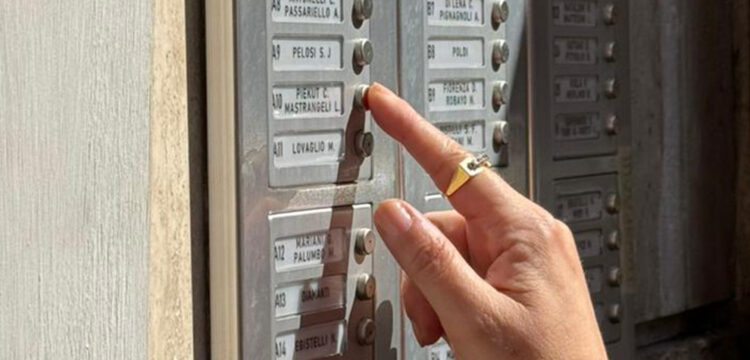Even After Everything Is Over
Damiano Tata with SPAZIO GRIOT at Lateral Roma
Based in Rome, Damiano Tata is an artist and “occasional” composer whose work investigates human and non-human otherness, focusing on unconventional archival practices integrated into complex systems. Invited to SPAZIO GRIOT’s inaugural 2024 residency—a five-year programme inspired by and dedicated to the 1959 Second Congress of Black Writers and Artists held in Rome—Tata spent the past year deepening his research and creating a new body of work culminating in the exhibition Anche dopo che tutto è finito(Even After Everything Is Over), curated by Johanne Affricot and Eric Otieno Sumba, currently on view at Lateral Roma as part of SPAZIO GRIOT’s summer public programme (The System Concedes Nothing Without Demand).
Drawing on history, poetry, and dreamlike registers, the artist reworks one of Audre Lorde’s foundational quotes, “The master’s tools will never dismantle the master’s house,” by deconstructing, transforming, and blending references including Egyptian and Greek philosophy, classical music, speculative fiction, and jazz to reveal tensions between memory and the present, reality and fiction.
In the following conversation with the exhibition’s curators, Tata reflects on Italy’s colonial legacy, the production and use of chemical warfare agents in 1930s–40s Italy and Ethiopia, the normalization of violence, the influence of mass media on popular culture, and the methodologies that guide his research-driven, interdisciplinary practice.
To mark the closing of the exhibition on July 17, starting at 6:30 p.m. the artist is preparing a one-night-only performance that blends visual art, sound, and theater. Designed as a finissage event, the presentation will feature projected images that interact with the existing work, aiming to create a form of non-verbal communication with the audience. The structure of the evening will mirror that of a theatrical performance, with a slower, more deliberate pacing and the use of occasional sound effects to enhance the atmosphere. At the center of this experimental piece is a shadow theater, currently in development, which will serve as both a visual framework and a storytelling device. The result is an incidental hybrid narrative—part installation, part performance—reframing the exhibition through movement, light, and silence.
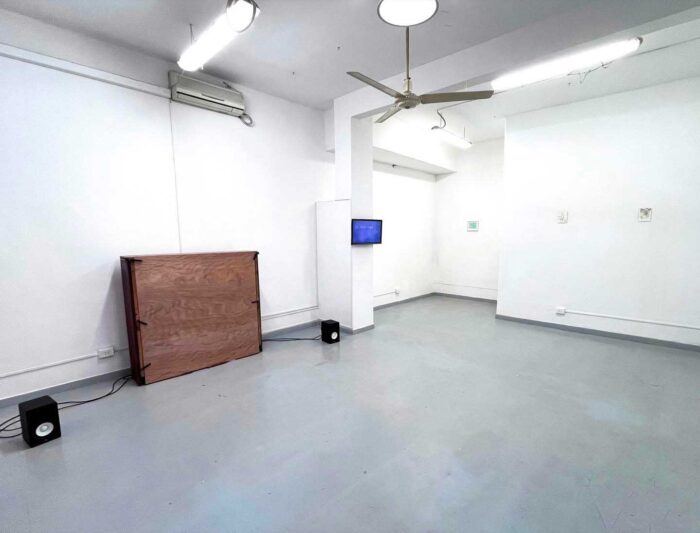
Johanne Affricot and Eric Otieno Sumba: What are some interesting facts you discovered during your research for the show that you’d like to share with readers?
Damiano Tata: What I would certainly like to share with readers is that in the process of constructing this exhibition, I used materials that are metaphorically and socially toxic, because in the hands of the artist, “the master’s tools”, to quote Audre Lorde, have a different effect and meaning, and can in turn be disassembled and reassembled in the exercise of critical thinking… the exorcism of traumatic figures and the recovery of anti-hegemonic, anti-supremacist and anti-colonial methodologies.
The body is where pain is inscribed. The body passes on pain to those who come after it. Unprocessed pain never disappears. Time encloses pain in a consequential tangle that is difficult to untangle. This exhibition is the result of a period of rather intensive research aimed at defusing hidden bombs, escaping from monstrous creatures, from war, from death, from the blackmail of 1960s neuromarketing, which still follows us today, and from the fear of Blackness that pervades this country, Italy.
I discovered that in 1939, Italy was still producing the same aggressive chemical agents [i.e., mustard gas] used during the seven-month war (1935-36) in Ethiopia. The orders, exponential in nature, as evidenced in the telegrams sent by Mussolini himself, reflect a desire for extermination that, fortunately, appears to have remained at least partially unrealized.
We don’t know whether these chemicals were actually produced in full, nor do we know where—if anywhere—they were stored. Silence, the primary tool used to carry out the massacres in Ethiopia and, more broadly, in what was then called Africa Orientale Italiana (AOI), left ample room for action. Where there is silence, music can be composed—and things can be said. The damage caused by mustard gas would later form the basis for early research into chemotherapy.
If such a poison, capable of destroying cell replication, can also become a cure, then starting from this premise, I have found that data and cultural phenomena born of the same wicked mentality that transforms poison into a destructive, obliterating, de-responsibilising weapon, can be reconfigured into something else: something that, thanks to the vast potential of speculative thinking, can act as an antidote, even if it still contains a trace of the poison.
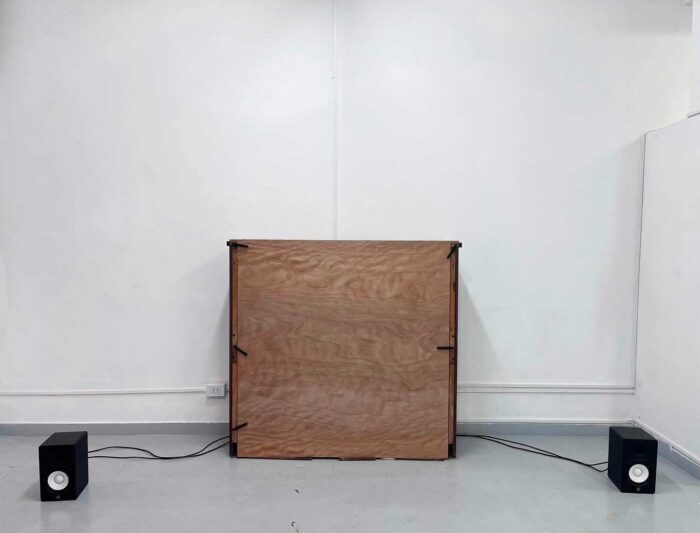
Anche dopo che tutto è finito (Even after everything is over) is your first solo exhibition featuring new work you have produced over the past two years. The heart of the show is a sculptural sound installation. Could you tell us a bit about how you built it and what the installation is about?
The work is the result of various components, tools, processes, and archival materials that were collected over nearly two years, from 2024 to 2025. The installation functions as a narrative machine assembled using methods already present in my previous work: archival extraction, data reorganisation, and sonification. In this case, it takes the form of a hybrid narrative that can be experienced through an animated text set to music created by sonifying the aforementioned telegrams and reworking the results into an organic, polymetric composition rich in variation.
The resonant box, Psychostasia, the heart of the exhibition, is activated by 11 exciters, i.e., digitally controlled motors that vary their frequency and transmit variations sympathetically to the strings of an 1897 cabinet piano. The piano’s irreversible detuning creates hybrid sound atmospheres that blend the thunderous roar of machinery with the most delicate resonances. Through a wide variety of registers, glitches, imperfections, screeches, and beats, a soundscape emerges, resuming a dialogue long thought to have ended, with a voice once believed to have died out.
Setting up the entire organism was the result of a continuous process of assembly and listening to the instrument in space, followed by writing of texts, which were also assembled, adapted from old Mira Lanza television commercials, Oedipal suggestions, and hieratic settings.
In the structure of Greek theatre and the oral narratives of the even more ancient Griots, detaching the protagonist, Calimero—a famous chick from 1960s Italian television—from the advertising fairy tale and catapults him into the world, and finally, into the afterlife.

Your practice is significantly research intensive, dealing with historical topics via a variety of references. What are your most important references?
I must admit that my references are somewhat contradictory and fragmented, spanning diverse fields, from theatre and oral traditions to psychoanalysis and early examples of Italian neuromarketing. The dialogical nature of my work brings together elements of algorithmic and serial composition with historical, archival, and personal material. The encounter between the latter allows me to move methodologically across disciplines, adapting according to the needs and function of the action I want to perform.
For this exhibition, I chose an approach that does not center on visuality, instead relying on the viewer’s ability to imagine the visible elements of the story. It is an invitation to test one’s perceptive faculties, to exercise the power of suggestion, and to engage—both empathically and critically—with a narrative that, although fictional, is deeply entangled with reality.
My bibliography spans a range of authors and disciplines, including bell hooks (Black Looks. Race and Representation, 1992; Teaching to Transgress: Education as the Practice of Freedom, 1994; Art of my mind: Visual Politics, 1995), Matteo Dominioni (Lo sfascio dell’impero. Gli italiani in Etiopia (1936-1941), 2008) and Pauline Oliveros (Deep Listening. A Composer’s Sound Practice, 2005). It also includes Ennio Flaiano’s Tempo di uccidere (1947), as well as Angelo Del Boca’s Italiani in Africa Orientale (vols. I–IV) and I gas di Mussolini. Il fascismo e la guerra d’Etiopia(2021). From this last text, I extracted some of the telegrams that served to generate the music for Psycostasia. As mentioned above, the protagonist of my story is a well-known television chick named Calimero, a small black bird, with blue eyes, wearing a half eggshell on his head, who often complains about the injustices that his small world reserves for him. The reference to Carosello—an iconic Italian television advertising show which aired on RAI channel from 1957 to 1977–is immediate. In my narrative, the chick finds himself cornered in a world that does not want him, and here he must make choices, interact with ancient deities, and ultimately face death.
The choice to include, in this dialogue-based “remake” between Carosello and the Togliatti Amnesty, Egyptian deities and rituals—specifically psychostasia, the ancient rite of weighing the soul after death in the hieratic tradition—serves as a way of reconnecting with a non-Western epistemology, of revealing what lies beneath the infernal machine that is our reality.
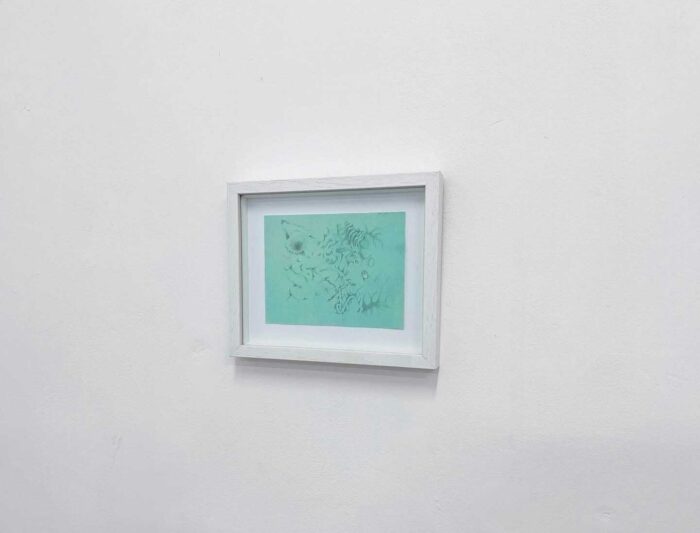
In what way is your work relevant to the current socio-political situation of Italy?
Personally, I do not believe that, at least in the case of my research, there is any possibility of direct action. Rather than addressing the issues I’m interested in dealing with it in an explicit manner, I prefer to take a step back. I would like this time-based work to be an exercise in careful listening and enjoyment, an opportunity for growth, catharsis, and reflection. These are, in themselves, relevant tools for cultivating anti-hegemonic, anti-supremacist, and anti-colonial practices.
According to ISTAT (the Italian National Institute of Statistics), in less than twenty years, four out of ten elderly people will experience loneliness as their primary companion. We will be some of them. This projection led me to wonder if there is a connection between this future solitude and unresolved issues concerning our colonial past, the nuclear family structure, and a certain tendency to ignore what is happening around and within us—especially in relation to those we wrongly consider “the other.”
I hope this work can serve, in some way, as a means of readdressing what has been removed. Not by directly confronting it, but by inviting viewers to think critically, freely, and speculatively. To consider the possibility of acknowledging atrocities we did not personally commit but have inherited and for which we bear responsibility, as well as the responsibility of perpetrators.
The answer lies in the systems. My invitation is simple: pay attention. Listen. Remain open to the possibility of being wrong, and, in certain cases, allow yourself to change your mind.
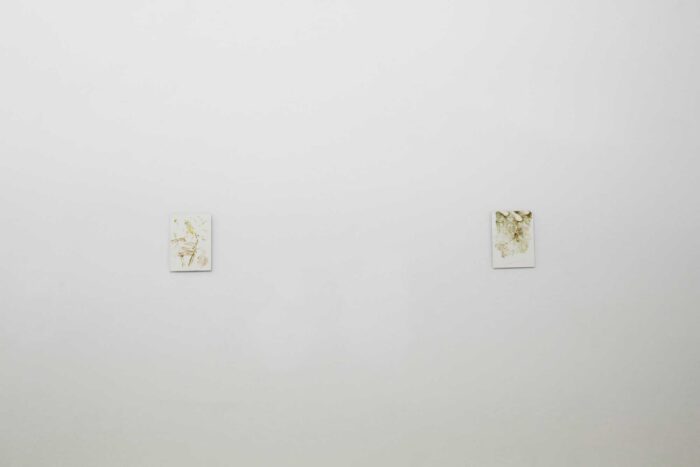
Anche dopo che tutto è finito (Even After Everything Is Over) (19 June–17 July) is on view at Lateral Roma.





